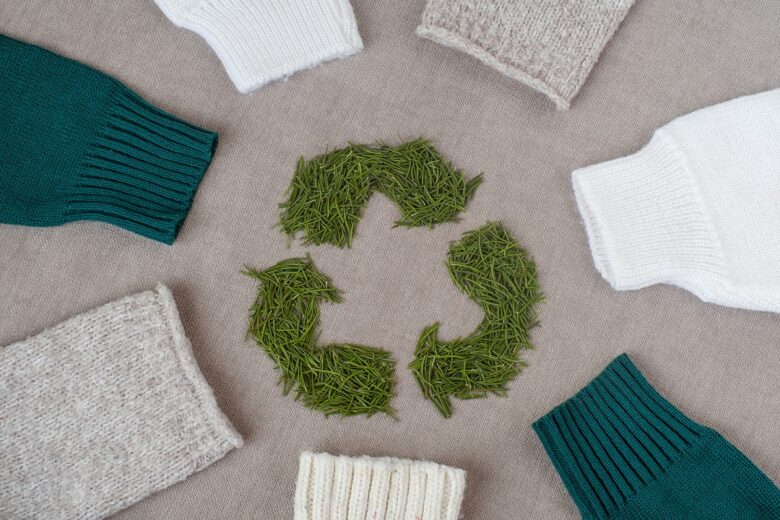People are becoming more aware of environmental issues, so we need to use sustainable methods in many aspects of our lives, even if we are just making something by hand. Green crafting methods can be used in many different ways when making clothes. This article discusses eco-friendly ways to make with fabric and gives you tips and ideas for projects that will benefit the environment.
1. Choose Environmentally Friendly Fabrics:
Choosing the right materials is the priority when making crafts green. If you want to buy environmentally friendly clothing, choose organic cotton, hemp, bamboo, or Tencel. These products are better for the environment than conventional products. Upcycled clothing and vintage fabrics are also great options because they breathe new life into old textiles.
2. Natural Coloring Agents:
Many traditional textile dyes contain environmentally harmful chemicals that pollute waterways and damage ecosystems. You can use natural dyes from plants, such as turmeric, onion peels, or avocado seeds. Experimenting with these dyes is not only good for the environment, but can also give your pieces a unique look.
3. Zero Waste Model:
Get the most out of your fabric and reduce waste with waste-free patterns. Look for patterns that make the most of every inch of material and leave little to no waste. Additionally, consider recycling fabric scraps for smaller projects like piecing, quilting, or even accessory making.
4. Sustainable Design:
When adding embellishments to your fabric creations, choose sustainable alternatives. Wooden buttons, coconut shell beads, or scraps of recycled fabric for appliqués are all eco-friendly options. These details not only enhance the aesthetics of the project but also contribute to more sustainable craft practices.
5. Upcycling and Reuse:
Upcycling is about transforming old or discarded items into new and useful items. Raid thrift stores or your closet to transform old clothes or fabrics into stylish, modern designs. This method not only reduces textile waste but also adds a unique touch to your creations.
6. Energy Saving Process:
Pay attention to energy consumption when making. Choose energy-efficient appliances and lighting in your craft room. Consider using natural light during the day and low-energy light bulbs when crafting at night. Small changes like this can contribute to a more sustainable production process.
7. Reusable Tools and Packaging:
Invest in high-quality reusable hand tools to minimize waste. Choose tools made from durable materials that will last longer. When packaging your handmade items for gifts or sales, choose eco-friendly packaging materials such as recycled paper or fabric packaging to reduce your reliance on single-use plastics.
8. Craft Workshops and Community Building:
Share your green craft knowledge by hosting workshops within your community. Encourage others to adopt sustainable craft practices and develop a sense of environmental responsibility. Community craft events are a great way to share ideas, materials, and inspiration, which can have a positive impact on a larger scale.
9. Conscious Consumerism:
Be a conscious consumer when purchasing craft supplies. Choose products from companies that prioritize sustainability and ethical practices. By supporting eco-friendly businesses, you ensure that your craft materials align with your green values.
Conclusion
Green craftsmanship in fabric making not only reduces the environmental impact of our creative pursuits but also adds a layer of mindfulness to the process. By integrating sustainable methods into our production processes, we contribute to a healthier planet while enjoying the therapeutic benefits of creativity. As we continue to research and adopt environmentally friendly technologies, we are paving the way for a more sustainable and responsible craft community.
FAQs
1. What makes the production of sustainable textiles so important?
The production of sustainable fabrics has a limited impact on the environment, reduces the amount of waste produced by textiles, and encourages ethical activities, all of which contribute to a healthier planet.
2. Which eco-friendly fabrics are worth considering in the field of textile crafts?
For a more eco-friendly approach, consider fabrics made from organic cotton, hemp, bamboo, or tencel. You can even view vintage and recycled materials.
3. What steps can I take to reduce the environmental impact of my fabric production?
If you want to reduce the amount of waste you produce, you should choose natural dyes, use zero-waste patterns, use sustainable decorating, and adopt upcycling and reuse techniques.
4. Are there specific natural dyes I can use to make fabric?
Try plant-based materials like turmeric, onion skins, or avocado seeds to find dye solutions that are both eco-friendly and unique.
5. How do I integrate a zero-waste model into my work? What exactly are these patterns?
Patterns that are considered zero waste are those that make efficient use of fabric and require only a small amount of waste material. Look for patterns that use materials as efficiently as possible and consider reusing fabric scraps in less important projects.
6. How can I create habits that help me produce more efficiently?
Creating a more sustainable craft practice can be achieved by choosing energy-efficient equipment and lighting for your craft space, using natural light where possible, and considering energy consumption.


